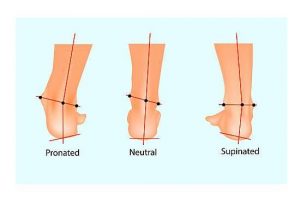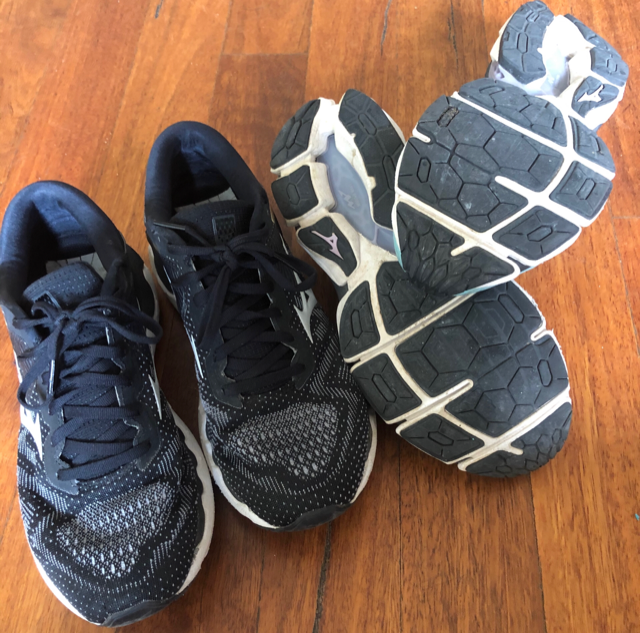Further tips for running include the importance of terrain and footwear.
A couple of good pairs of running shoes will do you wonders!
Choosing a good pair of running shoes makes all the difference in reducing risk of running injuries and improving the efficiency/performance of your running.
Why is this the case?
Positioning of the foot and ankle is critical to the alignment of your whole leg as you run and can affect the way muscles work at other joints in the body. Alignment of the foot and ankle whilst running can be improved with the right supportive footwear. Research investigating the best types of footwear for runners is limited, therefore runners need to make sure the shoe is the right fit for their body.

We have the following recommendations for footwear to help reduce the risk of injury whilst running:
- Have at least 2 pairs of shoes if running more than once a week. You need to let runners rest from use for at least 24 hours between runs. This allows the supportive structures of the shoes to bounce back and better support your feet
- Change your runners before they have exceeded their mileage limits
- Get a professional to check the wear-pattern on the soles of your shoes
- If you notice your feet rolling in/out as you run, use runners with lateral supports
- Choose runners with adequate arch support if you have flat feet
- If you normally wear orthotics, you need to make sure your orthotics compliment the running shoes
- Use more supportive running shoes for running longer distances
- If trying to increase performance a lighter shoe may be more favourable
Key message
Everyone’s body is different and a shoe that works well for someone else may not work for you.
You could head to specialised shoe stores such as Sole Motive or Active feet for an assessment on a treadmill and a great selection of running shoes. Our physio Lucy is also able to provide an in depth running analysis and recommend the best footwear for you.
Managing your training load and ensuring your body has the right form to cope with your training should take precedence before changing footwear. Your shoes can help your technique but they may not completely fix it.
How do I know if my running route is good for my body?
Another tip for running is choosing the right surface to run on. This can have a significant impact on the amount of load that is placed through each joint in your legs. Running on hard surfaces, inclines and declines places more load through your legs as you run. Too much sudden increase in load on your joints increases your chance of running injury. Therefore, it is important to gradually expose yourself to different types of running terrain.

Tips for choosing a running route that doesn’t increase chance of injury:
- Start with running on flat, smooth and relatively soft surfaces
- Initially avoid running on uneven surfaces, sand and concrete
- Gradually expose yourself to small changes in terrain each week
- When you start incline training make sure you start with small hills that don’t have too many uneven surfaces
- It may be useful to do incline training as interval training
- When running on uneven surfaces or inclines/declines ensure your footwear has adequate lateral support
- Running on gravel or rocky surfaces, ensure your running shoes have a non-slip sole
Most importantly, try not to expose yourself to more than 10% change in running terrain, distance or pace per week! Too many changes in these variables can overload your body and greatly increase risk of injury
More info on Tips for a safe return to running can be found in part 1 of this running blog
- Leah
References:
- (Bertelsen, M. L., Hulme, A., Petersen, J., Brund, R. K., Sørensen, H., Finch, C. F., … Nielsen, R. O. (2017).A framework for the etiology of running-related injuries. Scandinavian Journal of Medicine & Science in Sports, 27(11), 1170–1180.doi:10.1111/sms.12883
- Damen, L. (2020). The pros and cons of different running surfaces. Realbuzz.com. Retrieved 18th May 2020 from: https://www.realbuzz.com/articles-interests/running/article/the-pros-and-cons-of-different-running-surfaces/
- Luff, C. (2020). Can you wear trail running shoes on roads? Very Well Fit. Retrieved 18th May 2020 from https://www.verywellfit.com/can-i-wear-trail-running-shoes-when-running-on-roads-2911787
- 1 Mizuno Corporation Australia. Mizuno (2020). Retrieved 29th April 2020 from: https://mizuno.com.au/products/women/
- Redkar, A. (2020). Overpronation: What is it and how can you correct it? University Foot and Ankle Institute. Retrieved 18th May 2020 from: https://www.footankleinstitute.com/blog/overpronation-what-is-it-and-how-can-you-correct-it/
- The Right Running Shoes. Run and Become (2020). Retrieved 18th May 2020 from: https://www.runandbecome.com/running-product-advice/know-foot-strike
- Sports Medicine Australia (2020). Running Fact Sheet. Retrieved 18th May 2020 from https://sma.org.au/resources-advice/running/
- Sole Motive Australia (2020). Retrieved 29th April 2020 from https://www.solemotive.com/footwear.html

